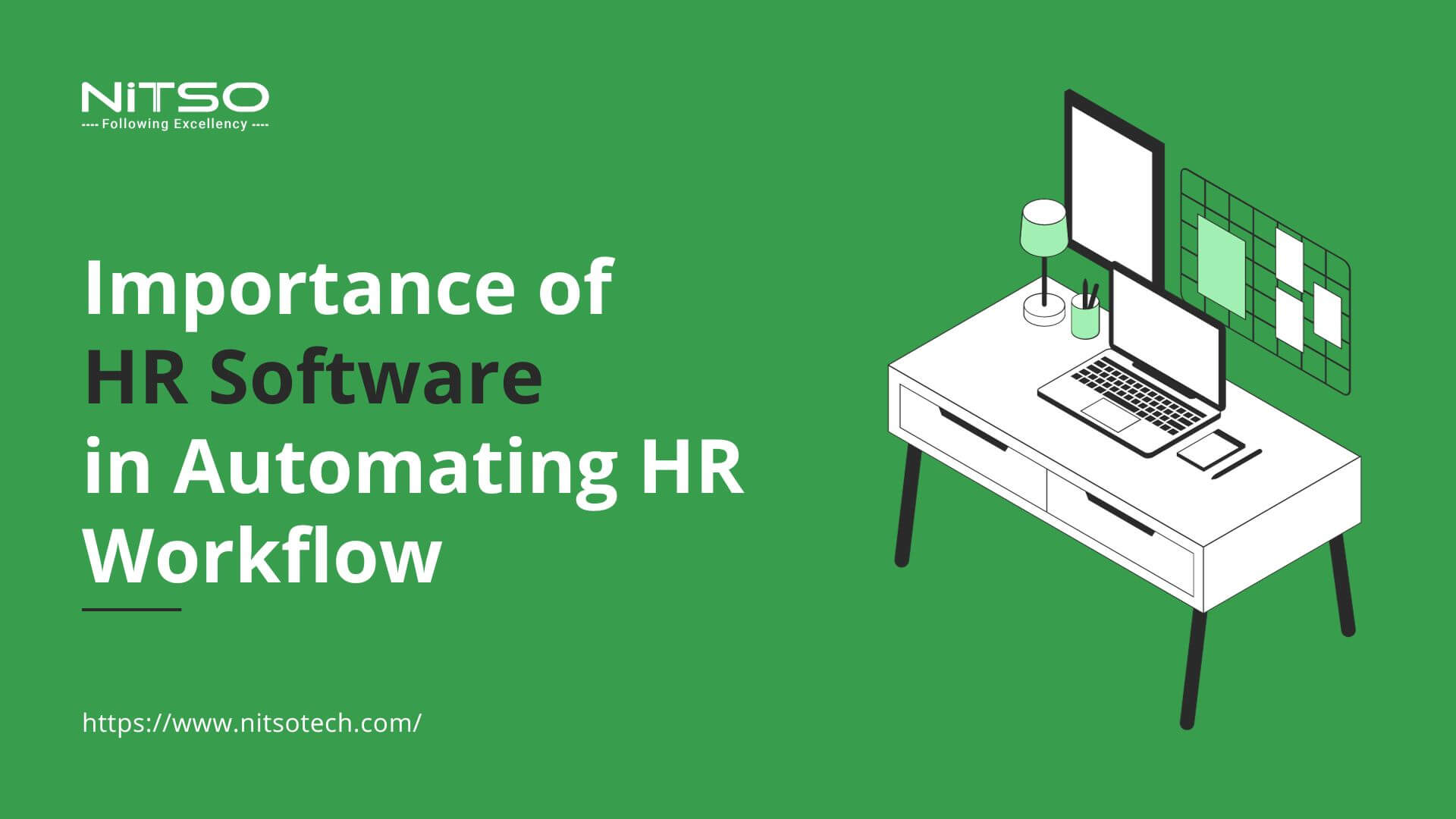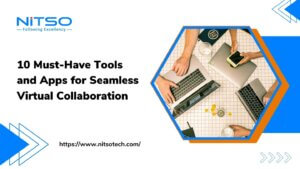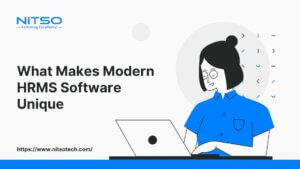In today’s rapidly evolving business landscape, human resources (HR) processes can no longer be managed using outdated manual methods. As companies scale, tracking elements like recruitment, onboarding, attendance, leaves, payroll, and performance reviews become increasingly complex without the right systems in place. Instead, forward-thinking organizations must leverage HR software to simplify workflows, reduce administrative workload, and improve efficiency across the employee lifecycle.
Implementing a comprehensive HR management platform in your business can lead to tremendous benefits, irrespective of your company’s size or industry. In fact, research indicates that organizations that utilize technology for key HR functions show much higher productivity and profit gains over time compared to those relying on traditional paper-based processes. But even if productivity itself is not the main driver, most companies find themselves wasting numerous productive hours each week on mundane administrative tasks – hours that can be better spent focusing on higher-level strategic initiatives or core business goals.
The question then becomes – how exactly can you harness the power of HR information systems for things like superior applicant tracking, streamlined onboarding, centralized documentation, automated attendance monitoring, and simplified payroll management? Read on as we delve deeper into some of the key reasons why investing in HR software should be a top priority for your business today.
Table of Contents
The Critical Role of HR Technology in Modern Businesses
1. Easy Applicant Tracking and Recruitment
Hiring and recruiting top talent is one of the most critical activities for any growing business. However, reliance on manual methods like sorting through resumes, scheduling interviews, and tracking applicants in spreadsheets can consume countless hours for HR professionals each week. According to SHRM, managers spend nearly 23% of their time just on resume review and interviewing schedules. Difficulty keeping candidate information organized also leads to potential qualified hires slipping through the cracks.
Implementing applicant tracking software helps streamline and automate these hiring workflows right from the start. Features like customizable job portals, one-click job posting to multiple sites, and paperless application management alleviate recurring administrative burdens. Recruitment management systems make it simple to collect and store all candidate documentation digitally in one place while allowing collaborative hiring between departments.
Sophisticated tracking tools provide instant visibility into key metrics like application conversion rates, time-to-hire, and cost per hire. HR can gain data-driven insights into the recruitment funnel to identify inefficiencies and bottlenecks. Custom workflows and automated task triggers eliminate redundant manual work, allowing recruiters to focus on more value-added tasks. For instance, personalized email templates can be configured to send screening invites, assignment updates, or rejection letters automatically once applicants reach certain stages.
AI-powered analytics take this one step further by discovering top applicant sources, predicting hiring outcomes, or even identifying potentially biased job listings. Instead of combing through resumes, intelligent screening tools can automatically rank and shortlist candidates that meet the required criteria. This results in up to 70% faster shortlisting and remarkable productivity gains. In essence, embracing proactive talent acquisition technology translates to spending less per hire while still attracting and engaging high-quality talent.
2. Simplified Onboarding and Documentation
The onboarding process sets the tone for a new employee’s entire tenure at an organization. Yet most companies still rely on tedious paperwork and manual data entry to handle tasks like tax forms, company policies, equipment allocation and more during the first weeks on the job. This leaves room for errors, duplication of efforts, and delayed onboarding – costing organizations over $680 per hiring misstep according to recent estimates.
Onboarding software helps companies create streamlined digital onboarding checklists to systematically guide new hires. Instead of filling out dense paper documents, new employees can simply access interactive online portals to submit necessary paperwork electronically. Digital workflows automatically route forms and data to appropriate teams, skipping the manual handoff.
Document management platforms centralize important records like offer letters, employment contracts, tax forms (Form 16, 12BA), pay slips, and company policies into easily accessible online profiles. Built-in e-signature facilitates contactless sign-offs, while automatic data flows reduce repetitive data entry for HR. Self-service portals even empower new hires to manage their own documentation needs post-boarding.
Together, these tools create a paperless onboarding system where HR can track task completion, digitally store everything needed per regulatory compliance, and enable new joiners to integrate smoothly. Analytics provide insight into bottlenecks like missing paperwork which can then be addressed proactively. Instead of spending weeks collating forms and resolving issues, onboarding time can be cut in half using onboarding software. This accelerates productivity and leaves new employees feeling valued from day one.
In essence, intuitive onboarding technology saves HR dozens of hours normally wasted on administrative work. Better organized processes lend focus to more strategic programs like cultural assimilation, training, and skill development – all while ensuring robust compliance.
3. Organized Employee Database
Maintaining comprehensive employee records is an integral aspect of human resource management. However, relying on basic spreadsheets to manually track details across the employee lifecycle soon becomes unwieldy. Data entry errors, version control issues, data duplication, and lack of cross-team visibility into employee information cause endless headaches as companies expand.
Robust HR management systems provide a centralized, secure database to digitize employee records and organizational structure. Key details like contact information, compensation history, attendance/leave, appraisals, skills, training certificates, and compliance documents can all be stored in individual profiles.
Structured employee data allows for simpler reporting and analysis too. HR leaders gain a holistic overview of the workforce with insights like headcount across locations, open requisitions, promotion readiness cues, succession planning, and more. This empowers strategic decision-making on things like growth forecasts, restructuring, role creation, and talent development planning.
Access controls and audit logging improve data integrity while role-based permissions enable information sharing on a need-to-know basis. Automated alerts notify responsible parties when employee certifications are expiring or required paperwork is pending.
Ultimately a digital personnel database eliminates the severe limitations posed by manual systems. It provides one version of truth while securing sensitive information more reliably. Leaders save time searching for reports while employees feel more empowered managing their own profiles. Routine HR processes like new assignments, off-boarding, or location transfers can be completed seamlessly through workflow automation.
4. Paperless Performance Management
The traditional annual review process is highly ineffective for driving continuous employee development. Infrequent feedback moments do not accurately capture year-long contributions. Delaying commentary for 12 months restricts the ability for tangible improvement.
- Performance management software provides a far superior alternative through features like competency mapping, goal setting, routine pulse surveys, self-evaluations, 360 reviews, and real-time feedback capture. This facilitates more aligned, continuous discussions allowing managers to reinforce good behaviors or realign teams regularly.
- Competency frameworks within the systems allow HR to define ideal skills and success criteria tailored to each role. Setting cascaded goals ensures alignment with corporate objectives. Embedded pulse surveys solicit anonymous feedback at set intervals to monitor progress indicators like satisfaction, burnout risk or engagement.
- Continuous performance evaluation coupled with social recognition paves the way for merit-based incentive decisions based on tangible metrics – rather than being driven by favouritism or bias. It also opens up opportunities for upskilling, and special incentives to retain top talent.
Most importantly, by shifting away from a single cumbersome year-end process, managers develop a culture that nurtures talent more collaboratively. Both employees and managers learn to exchange actionable feedback more consistently through integrated performance tools. This lends itself to accelerated skill development, higher job satisfaction and increased productivity gains for the business.
5. Automated Attendance & Leave Policies
Manual attendance and leave tracking can overburden HR teams, especially given the dynamic working arrangements prevalent today. Relying on error-prone spreadsheets and paper forms makes policy compliance difficult. It also leads to payroll disputes, attendance fraud, and costly overtime payouts over time.
- Attendance management software introduces automation to simplify these processes significantly. Features like geofencing, facial recognition, RFID tags and more enable touchless check-in. System integration with payroll software also allows the automation of stipulated salary deductions or overtime pay based on attendance policies.
- Leave management tools streamline applying for and approving leaves through digital workflows. Custom rules can be configured to govern different leave types, entitlements, carry forwards, lapses etc. Automated alerts notify employees and managers about pending requests, ensuring uniform compliance. Visibility into team-wide leave liability analysis enables smarter planning.
- Analytics within the system provides actionable insights around absenteeism hotspots, policy violations, fraudulent punched times and more. Trackable audit trails improve accountability. Issues can also be resolved quickly through automated notifications instead of manual checks.
Together this eliminates tedious admin work monitoring staff attendance and leaves. It minimizes payroll disputes due to wrongly calculated working hours or unapproved leaves. HR software automation ultimately drives consistency, enhances productivity, and improves compliance across the entire workforce.
6. Smooth Payroll Processing
Executing payroll operations manually can be an accounting and compliance nightmare given the complexity of tasks like managing salaries, taxes, reimbursements and deductions. Lack of automation leads to high error rates, and delays in issuing pay slips, and leaves little time for inspection.
Sophisticated payroll management software simplifies these processes through features like easy pay structure building, layered tax calculations, integration with attendance systems, and automated statutory contributions. After initial configuration, gross-to-net salary calculations factor in components like incentives, reimbursements, overtime wages and authorized deductions automatically based on HR system data.
Built-in country-specific tax calculation engines ensure accurate TDS, PT and LWF based on the latest compliance rules. Tools for managing investment declarations or auto-reconciling cumulative benefits also minimize errors. Cloud-based payroll technology enables running test runs to identify issues before final payroll execution.
Detailed pay slips can be auto-generated with a single click for all employees once processed. Downloadable reports and data exports in specific formats reduce reliance on manual documentation. Proactive notifications about pending tasks/approvals further smooth collaboration between the Payroll, Finance and HR teams.
Conclusion
As this article highlights, continuing to rely on antiquated manual processes to handle essential HR activities is no longer an option for modern businesses. The administrative burden around recruiting, onboarding, managing employee data, performance evaluations, attendance tracking, leave approvals and payroll processing eats into valuable productivity while exposing organizations to compliance risks.
Embracing cloud-based HR platforms and software solutions delivers immense advantages through process automation, insightful analytics, and simplified information sharing. Organizations can reduce hiring costs through applicant tracking systems, accelerate new employee onboarding using paperless e-forms, centralize documentation within digital personnel databases, facilitate continuous performance management through feedback tools, minimize payroll errors using tax calculation engines and more.
While the upfront investment in purchasing and implementing HR information systems may give some businesses pause, the long-term productivity, efficiency and cost gains are irrefutable. Standardizing platforms across HR functions provides a seamless, unified ecosystem where information flows digitally. This allows the HR team to focus less on transactional duties and more on strategic talent programs that directly fuel growth.








0 Comments